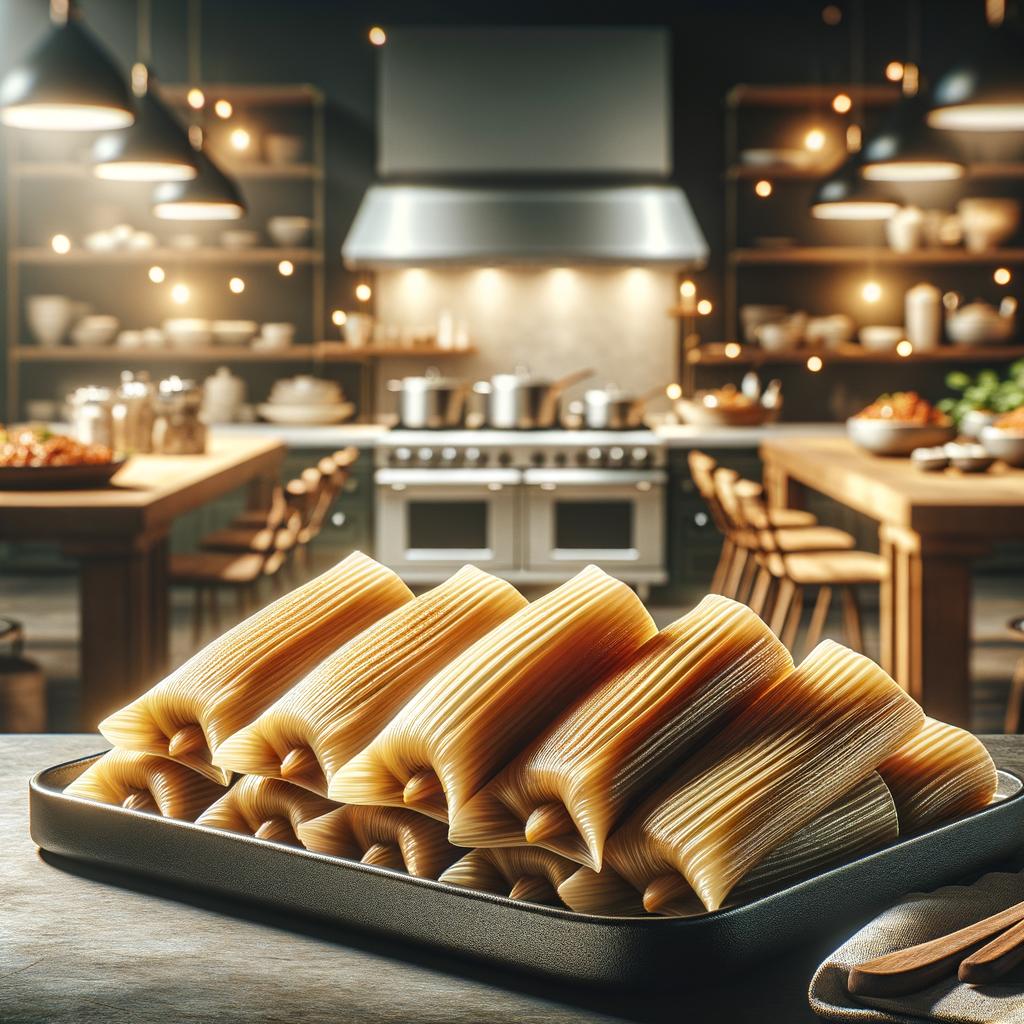Tamales

Description Tamales, a culinary gem from the heart of Mexico, are a small bundle of joy wrapped in a corn husk. Each tamale is a delightful surprise, revealing a soft, moist cornmeal dough known as 'masa' once unwrapped. The masa, often a creamy shade of yellow, is thick yet tender to the touch, and it carries a subtly sweet, earthy flavor, providing a perfect canvas for the rich, savory or sweet fillings it envelopes. The fillings can range from slow-cooked meats, cheeses, fruits, and even chocolates, each adding a unique layer of flavor and texture. The corn husk, apart from being a natural packaging, imparts a delicate corn flavor to the tamale during the steaming process.
Primary Uses Tamales are incredibly versatile, serving as a staple in numerous Latin American cuisines. They are often enjoyed for breakfast, lunch, or dinner, and even make a popular choice for festive occasions and holidays. Tamales can be a star of the plate on their own or can be served alongside other dishes such as chili, rice, or beans. Beyond the culinary world, tamales hold significant cultural importance. They are traditionally made in large batches, and the process of making tamales, known as 'tamaladas', often brings families and friends together, creating a sense of community and togetherness.
History The history of tamales dates back to as early as 8000 to 5000 BC, where they were prepared by the ancient Mayan, Aztec, and Incan civilizations. Tamales were considered a 'food of the gods' due to their primary ingredient, maize, which was a sacred plant for these civilizations. Over time, the art of tamale making spread across the Americas, with each region adding its unique twist to the traditional recipe. There are countless folklores associated with tamales, one of which tells the story of how the Aztec god, Quetzalcoatl, gifted maize to humans, who then created tamales as a way to honor the gods.
Nutritional Information Tamales, despite their humble appearance, are a powerhouse of nutrition. The masa provides a good source of carbohydrates for energy, while the fillings, often made with meats or beans, contribute protein. Depending on the filling, tamales can also be a source of fiber and various vitamins and minerals. For instance, a tamale made with a chicken and green chili filling can provide Vitamin A, Vitamin C, and iron. However, like any food, tamales should be enjoyed in moderation as they can be high in fat and sodium, especially if prepared with processed meats or excessive salt. Compared to similar foods like burritos or tacos, tamales can be a healthier choice due to their portion size and the use of steaming instead of frying in their preparation.

